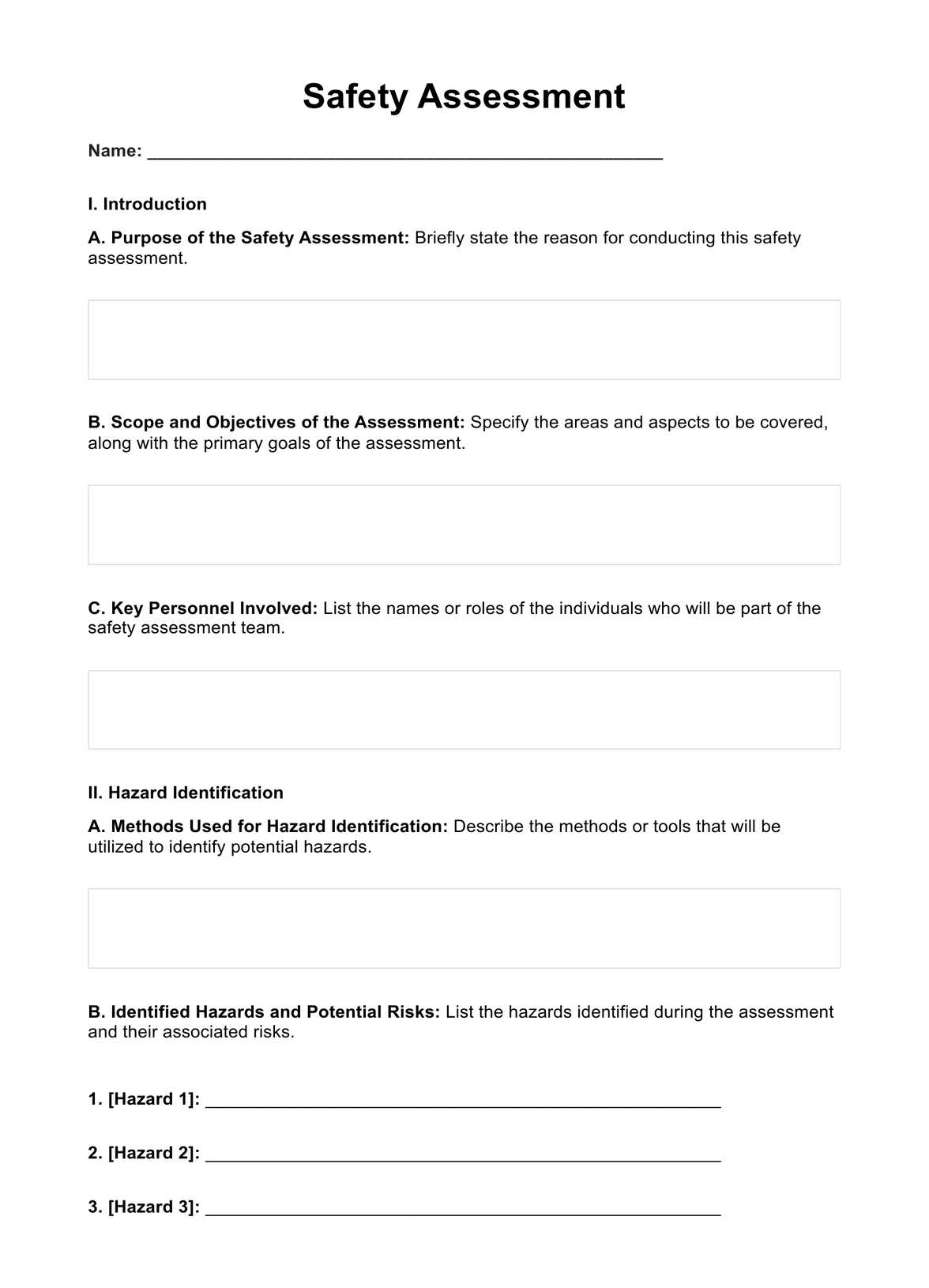Businesses, government agencies, NGOs, and individuals utilize safety assessments. Businesses use them to identify workplace hazards and create risk management plans. Government agencies regulate product, service, and activity safety through safety assessments. NGOs advocate for safety improvements in various areas, and individuals use safety assessments for their homes, workplaces, and activities.

Safety Assessment
Ensure safety and mitigate risks with Safety Assessments. Identify hazards, evaluate potential risks, and more to protect people, assets, and the environment.
Safety Assessment Template
Commonly asked questions
Safety assessments can be employed at any time, but they are particularly useful when there is a potential for harm. For instance, safety assessments are used to evaluate the safety of new products before market release, assess workplace safety after accidents, determine the need for employee safety training, and identify and prioritize safety hazards in communities.
The safety assessment process includes three main steps: hazard identification, risk assessment, and determining risk acceptability. Hazards are identified through surveys or historical data analysis. Risks are assessed by estimating the likelihood and severity of potential harm, and acceptability is determined by considering factors like cost, benefits of risk reduction, and legal requirements. Safety assessments are vital for ensuring safety despite being complex and time-consuming.
EHR and practice management software
Get started for free
*No credit card required
Free
$0/usd
Unlimited clients
Telehealth
1GB of storage
Client portal text
Automated billing and online payments











